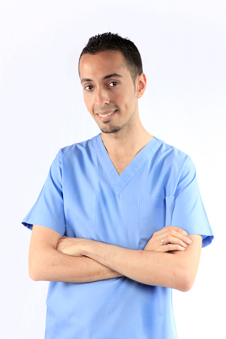Tuesday 7 April 2020 9:31am
Concerned about the impact of the Covid-19 pandemic University of Otago medical school alumnus Dr Zeid Abussuud decided to spread the word on staying safe.
With a little help from his friends, many of them also graduates of Otago, Dr Abussuud has made a moving YouTube video, Do it for the whole world: Stay at home.
“The idea is to deliver a message about the importance of staying at home in the midst of this pandemic while government workers, police officers, firefighters, post office workers, teachers, supermarket workers, public transport workers and healthcare workers do their part to protect us and make our world safer. We wanted to deliver that message from people of different ethnic and career backgrounds and different ages.”
In the video, he has included the voices of individuals from 45 different countries speaking 26 different languages. The first voice is that of Albanian designer Blendi Uncleboat Bandilli, and the last, that of Dr Nia Davies, from Wales, who now works in Wellington as an intensive care doctor.

Dr Zeid Abussuud. Photo: Firas Abussaud.
Dr Abussuud who is originally from Saudi Arabia, graduated from the University of Otago with a Bachelor of Surgery and Medicine in 2014, and spent his clinical years in Wellington.
He enlisted the help of dozens of people to make the video, including those who recorded their own video messages, and those who helped out behind the scenes.
Luckily, he knows a few people.
“Living in such a multicultural country as New Zealand gave me the opportunity to meet people from all around the world. I was also able to meet people during my travels. Some friends were kind enough to help and I was able to communicate with a few people that I found inspiring through social media to ask them to join our video.”
Dr Abussuud worked as a neurosurgery registrar at Wellington Hospital until August last year, and is now living in the UK while he completes a Master's degree in trauma sciences at the University of Birmingham and does research on traumatic brain injury at the city’s Queen Elizabeth Hospital.
He chose not to appear in the video himself, preferring that the message come from people from diverse backgrounds, not just those working in the health sector. He also thinks his cousin Rana Abussaud’s six-year-old daughter Waad and four-year-old son Rasool Alalqum did a far better job of conveying the message, than he would have.
Dr Abussuud says the video took about two weeks to pull together. As well as those who appear in the video, he had just as much help behind the scenes, including from Otago alumna Hayley Stevenson, who works as a physiotherapist in the UK and from Pamela W.Z. Lee from Singapore. Two friends from Saudi Arabia, Wesam Shabaan and Mohammed Humaidi, helped with the closing song verse, and 10-year-old Rama Alawami provided the art work for the video’s closing scene, a drawing of the planet wearing a mask. The video was edited by Sergej Smilkov from Macedonia.
The Otago alumni who appear in the video are: Mina Kaldas, an Egyptian New Zealander who works as a pharmacist in Auckland; Dr Aftab Moosa, an Indian New Zealander who works as a dentist in Auckland; Dr Aufar Bahri, from Indonesia, who works as a GP registrar in New Zealand; Hesam Alavi, an Iranian computer programmer who works in Australia; Abdulla Ghandour, a Jordanian New Zealander who works as a digital marketer in the United Arab Emirates; Imran Fauzi from Malaysia, who works as a pharmacist; Dr Dayna Tafatu from Niue, who works as a house officer in Dunedin Hospital; Nimra Asfar, a Pakistani New Zealander, who works as a dental prosthetist in Australia; Marina Medvedeva from Russia, who is a businesswoman in Auckland; dentist and comedian, Dr Abdulla Ali from the United Arab Emirates; Terena Naidoo, a South African New Zealander who works as an occupational therapist in Australia; and Dr Ahmad Mustafa, a Palestinian who works as dentist in New Zealand.
